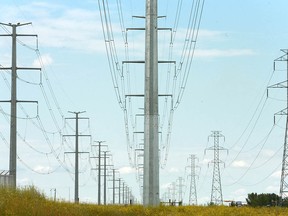At 6 p.m. Tuesday, the AESO, which operates the province’s power grid, indicated Albertans were using 11,820 megawatts of power

Albertans set a record for summer electricity use early Tuesday evening.
At 6 p.m. Tuesday, the AESO, which operates the province’s power grid, indicated Albertans were using 11,820 megawatts of power, topping the previous record of 11,721 set on June 29, 2021, during the deadly, climate change-fueled heat dome.
By 7 p.m. that demand began to inch down, to 11,794 — a number which would still have set a record.
That happened as temperatures reached 29 C at the Calgary International Airport, according to Environment and Climate Change Canada.
On Monday, high temperatures that reduced generation, an unplanned thermal generator outage and a line outage led to the grid alert that evening.
But AESO had expressed confidence it has enough supply of electricity in the system to head off any disruptions, even with hotter temperatures expected.
Earlier in the day, AESO said in a statement to Postmedia that Alberta had enough electricity generation to meet demand over the coming days, when temperatures are expected to reach the mid-30s C in Calgary.
“Our system controllers are managing through this current heat wave in partnership with industry, and at this time we have adequate generation forecasted for the next several days,” the AESO wrote in a statement Monday afternoon. It did not elaborate on what steps industry is taking.
Wednesday’s forecast calls for a high of 35 C with temperatures expected to remain in the high 20s through the weekend.
AESO is encouraging Albertans to take conservation measures such as closing window coverings, lowering thermostats to pre-cool homes, and avoiding using major appliances and charging electric devices — particularly during peak hours of the late afternoon and early evening.
According to the AESO, the highest level of electricity use ever recorded in the province occurred last Jan. 11 when bitterly cold temperatures led to a peak of 12,384 MW.
— With files from Matt Scace